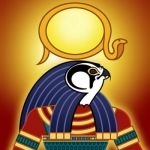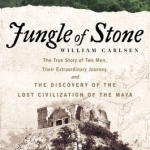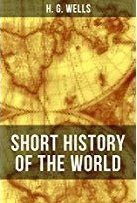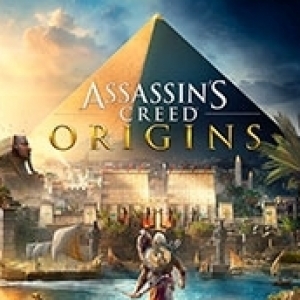Is the Bible really gospel truth?</i> This is the question the honourable, academic Robert Babcock aims to find out on his quest to find the earliest copies of the gospels in order to prove the reliability of the story of Jesus as recounted in the King James Bible. However, this is not the key focus of Stephen Taylor’s fictional novel, <i>Gospels</i>. The main character is the perfidious John Campbell-John, a rogue, imposter and swindler who flees 19th-century England in an attempt to escape from his debts.
John meets the magnanimous Robert in Venice and, despite being polar opposites, become firm friends. After being honest for the first time in his life, admitting to owing thousands of pounds in gambling debts, Robert offers John the opportunity to accompany him on his quest through the deserts of Egypt. John accepts and the pair finds themselves on an adventure of discovery and personal redemption.
John and Robert make an unlikely but excellent team. Robert’s knowledge of the Bible and ancient history is vital, however, John’s propensity for falsehoods and cunningness gets them out of a few scrapes and tricky situations. Nonetheless, it is difficult for John to give up his old ways and his insular behaviour threatens to get them in more trouble.
Fortunately, Robert’s humility begins to influence the young scoundrel, as does his penchant for historical artefacts. As the story progresses, John begins to leave his past behind and becomes interested in Robert’s work, learning new things about Egyptian culture and the origins of the Bible. However, when a new gospel comes to light that threatens the whole of Christianity, Robert does not know what to do; and only John can give him counsel.
John Campbell-John is a character that the author introduced in a previous book. However, the timelines are not sequential, therefore <i>Gospels</i> is a stand-alone novel. The time frame for this book needed to be set in 1835 to correspond with historical truths. Although Robert’s discovery of a Gospel of Thaddeus Jude is an invention of the author, the quest itself is based on the journeys of three 19th-century Bible hunters. Stephen Taylor has conducted an enormous amount of research, including the biographies of Robert Curzon, Constantin von Tischendorf and Émile Amélineau who, on separate occasions, sought the same knowledge as the fictional Robert Babcock.
Despite being titled <i>Gospels</i>, the novel, for the most part, focuses on John Campbell-John and his wicked ways. Through a first-person narrative, John explains his past, his betrayal of a friend, and his addiction to gambling. Initially, he has no qualms about his behaviour and acts only for himself and his selfish greed. Whilst Robert goes in search of knowledge, John goes on a journey of redemption, coming to terms with his previous wrongdoings. However, acknowledging these faults is not enough, he needs to turn away from these roguish ways.
It is disappointing that the narrative does not focus more on the gospels, both real and imagined. There was enormous scope for an in-depth look at the life of Jesus and the inconsistencies in the Bible. The fictitious Gospel of Thaddeus Jude evokes a similar reaction in Robert as the Non-Canonical Gospel of Thomas found in the 19th-century had on many devout Christians. There was so much potential with this direction of thought, however, the author passes over it in preference to the life of John Campbell-John.
Slow to begin but increasingly interesting as it progresses, <i>Gospels</i> is a book of many themes. History, both 19th-century and ancient; religion, although not a Christian story; and achievement and absolution combine together to produce a unique tale that takes the reader from the back alleys of London to the River Nile and the deserts of Sinai. A subtle clue in the prologue keeps readers alert as they await the conclusion of the adventure – an ending that ambiguously reveals whether John moves on from the follies of his past.

Reiner Knizia's Ra
Games and Entertainment
App
Summer Sale + 64bit update celebration! We are working hard to avoid the Appocalypse - help support...
BookblogbyCari (345 KP) rated A Short History of the World in Books
Aug 5, 2018
As I hoped, the book often reads like a novel, with 67 distinct sections, each like a mini story. In order to fit the history of the whole world into one book, by nature the story telling ranges from nice and rapid, to a little too rapid. I found it rather like a catalogue of numerous interesting little nuggets of information. Despite covering events from all over the world, the topics often flow seamlessly from one topic to the next. Due to so many overlapping topics, this history of the world isn't told in a linear purely chronological pattern, but has to go backwards a little, now and again.
At various times throughout, the stories are gripping and Wells successfully brings history to life. I particularly liked the various sections on religious leaders. Appropriately, Wells tackles religion as would any unbiased historian-become storyteller. I also enjoyed the beginning, where Wells paints a crystal clear picture of our solar system and the vast empty space that our dramas are within. His description of our galaxy sounds nothing short of beautiful.
The book was meant to be predominantly factual, but Wells did include a substantial amount of speculation and opinion. This does not distract from the storyline, but adds value in generating the concepts of the time periods.
It covers progress and prosperity as much as carnage and decimation, and provides good explanations of everything it covers. (Although it would benefit from more illustrations). At times it feels detail heavy but also gives the reader a feel for each age - the book is not limited to which country went to war with which country and when, but also examines changes in ways of thinking through the ages. Including the Ancient Greek philosophers, Arabian progress in maths and science, the advent of experimental science, and the development of political and social ideas in Wells’ time.
I was reassured to learn that despite not studying the history of the world in its entirety in school, I was already familiar with much of the book’s content. Having said that, there were also topics where I really felt I was learning something. I read Wells’ opinion on why the Roman Empire fell, and how the industrial revolution was not merely a revolution in machinery, but rather a revolution in how people conducted their everyday lives. There were also some important figures from history described that were never mentioned in my school days, particularly Charlemagne and Roger Bacon.
Towards the end of the book, Wells correctly predicts another war like that of the Great War. However his final message was one of faith and hope in humanity’s progress.
With such a huge scope, Wells must have struggled with deciding what topics to include and what to exclude. I thought he ought to have included a touch more detail on Ancient Egypt, and on the causes of the Great War (World War 1). As a British person myself I would have liked to have seen more on British history.
Likewise, if the book were written now rather than 1922 I began to speculate on what he would and wouldn’t have included. I imagine there would certainly be a section on World War 2, rockets into space, the internet, and 9/11. He would have provided an excellently conducted section on how humans are destroying the planet.
One of the beauties of this book has to be its availability. If you type “short history of the world” into Google, the free PDF of this book takes up much of the first 2 pages of results. If you’re sketchy on world history, this book will fill in the main blanks, and is worth a read if this is your aim, especially if you wish to do so quickly. The fact that it’s split up into so many succinct sections also means that you can pick up and put down the book as often as opportunity allows. It also works well as a reference book, as it does not need to be read from cover to cover in order to look up one particular event or time period.
In summary, this book would be a welcome addition to bookshelf (or ebook library) of the general non-fiction fan or historian.
Find more of my book review on www.bookblogbycari.com

Super Why! ABC Adventures
Education and Games
App
Parents' Choice Gold Award Winner! No in-app purchases - all Super Reader games are immediately...

Jungle of Stone: The Extraordinary Journey of John L. Stephens and Frederick Catherwood, and the Discovery of the Lost Civilization of the Maya
Book
New York Times Bestseller (Expeditions) "Thrilling...A captivating history of two men who...
History of Dance with Web Resource
Book
History of Dance, Second Edition, offers readers a panoramic view of dance from prehistory to the...

Kids Yogaverse: I AM LOVE
Health & Fitness and Book
App
Kids Yogaverse: I AM LOVE is “Highly recommended” by the US Surgeon General as a healthy app...

Summer Heat: A Steamy Romance Collection
Caitlyn Lynch, Christina Rose Andrews, Ariel Bishop, Líadáin Douglas, Annika Steele, Gwen Marshall, Abbigail Clark, Livvy Ward, T.D. Crawls, Ava Bari, Avery J. Heath, Tally Bane, Sera Taíno, Moxie Rivers, Siobhan Kearney, Cynthia Miller and Tricia Ramey
Book
A collection of 17 steamy short stories (5,000 - 10,000 words) by new and established romance...
Anthology Contemporary Romance
Mothergamer (1607 KP) rated the PC version of Assassin's Creed: Odyssey in Video Games
Apr 3, 2019
Odyssey is a bit different from its predecessors. The story is set at the beginning of the Peloponnesian war; an ongoing struggle between Sparta and Athens for dominion over Greece. This opens up a lot of interesting places to explore and dialogue options. At the beginning of the game you can choose which Misthios (mercenary) you want to play as; Alexios or his sister Kassandra. It really doesn't matter who you choose because the story is essentially the same for both so it's just a matter of whether or not you prefer to play as a man or a woman. For my first playthrough I went with Kassandra.
Kassandra starts her adventure.
Right from the start, Odyssey hooks you in with an action filled introduction and sets the scene for the story. After that you meet the character you chose; in my case Kassandra and you get a brief tutorial on how the gaming controls work. You also get a mount with this and those controls are pretty easy to navigate. Once you have the hang of it, you can get started on your journey with the main story and the vast amount of side quests.
This is where Odyssey differs a bit. There is more of a role playing aspect to the game with you being able to select different dialogue options while talking to people. You can choose to be cutthroat, a mercenary with a conscience, or ridiculously flirty. Yes, with some of the NPC characters be they men or women Kassandra could have flings with them. Don't worry, nothing overly graphic is shown, but it is definitely heavily implied. Your weapons are different as well. There is no assassin's blade here. You have a precursor artifact weapon in the form of a spear and the options of daggers and swords. You also have a bow and arrows which are quite useful for fighting at a distance.
Have a horse for your travels!
As you level up, you gain ability points which you can use to unlock certain skills to enhance your fighting and stealth from the following three categories in the skills menu: Hunter, Warrior, and Assassin. It is beneficial to unlock these because they are incredibly useful in battles against your enemies. There are also ship battles which bring back memories of Black Flag. The ship battles are challenging, but they are so much fun. You can upgrade your ship to make it a force to be reckoned with. Upgrading the hull is definitely a must so you can ram the heck out of other ships and take little to no damage. You need a crew also of course and Odyssey has an ability where rather than assassinating targets, you can knock them out and recruit them to join your crew.
Unlock abilities in the skills menu.
The running theme for your protagonist is all about family. This is where you are introduced to the mysterious villains, The Cult Of Kosmos who have a hand in much of the conflict in Greece all for power. You have to travel all over the world map to find clues about each cult member in order to reveal their true identity and the location of their main hideout. Once you have those, you can find them and take them out. Be wary however, some cult members are heavily guarded and quite the challenge to fight. This is where Odyssey's notoriety system comes in. The more crimes you commit i.e. murder (come on, you know that's what assassination is), the more likely it is that someone will put a bounty on your head. Then you find yourself relentlessly hunted by bounty hunters with very colorful names. The bounty hunters are no joke and if you do not plan out your strategy and tactics, they will end you. There were some who had lions and they would tag team the crap out of me which could be more than a little frustrating, but that's part of the challenge. Two ways around this are offing the person who put the bounty on your head or paying off the bounty. If you have the coin, you can pay the money and the bounty will go away.
Besides the main story, there are a ton of side quests and conquest missions to do. Sneaking around and taking out guards in a fort can be difficult, but rewarding as you take everyone out and diminish that nation's power. Looting the treasures, burning the supplies, and taking out the captains completes that area and will show you a meter with their power depleting. Once you have completely drained their influence, you get a conquest battle option. You get an epic battle between Spartans and Athenians and you have to take out all the captains during this battle in order to win the conquest. There were times where I totally screwed up and a guard saw me and then I had to brawl my way out among five or six of them. That was a whole other adventure in itself. It definitely raises the stakes when that happens and makes Odyssey feel like a whole new game.
Getting caught by guards sucks. Time to brawl my way out!
My favorite thing to do in Odyssey was exploring. I loved discovering new areas and hanging out in ancient Greece. Climbing up to the tops of high buildings, cliffs, and statues just to synchronize the map and see the view from a high vantage point was pretty fantastic. No two areas were alike and there was always something new to see. Some of the small side quests were hit or miss at times, but I was never bored at all. There was always something to see or do.
An eagle's eye view of ancient Greece.
There are a variety of armor and weapons choices in Odyssey. As you progress, you can upgrade to better armor, weapons, and crafting materials. If you have a favorite armor set, when you upgrade you can glamour the armor to look like the favorite set. Again, this adds a role playing aspect where you can actually gather materials and craft weapons and armor in the game. This is also true for your ship. You can choose a variety of sails, ship designs, and even tailor your crew with characters from past Assassin's Creed games as your lieutenants.
If you're looking for more challenge with your challenge, there are legendary beast and mythological monster fights you can do. The locations of each legendary beast is marked on your world map. With the monsters, you happen upon some of them doing certain quests. This was how I accidentally discovered the fight with Medusa. These fights are insanely hard and Medusa seemed to be the hardest one of all. I got my ass handed to me quite a few times before I finally won. It is vindicating when you do win because they are so difficult and you have to be constantly thinking about your tactics and theirs. The fights absolutely keep you on your toes, but man what a thrill!
Medusa fight is crazy!
When you see the world map, it can be a little overwhelming with how vast it is. Areas you have already explored will be highlighted and areas that are not unlocked are grayed out. The map will also show you what level each area is so you can level grind and plan accordingly. I had fun unlocking the areas and receiving contract quests and bounties which offered lots of drachmae and sometimes item rewards such as armor.
The world map is huge. Get out there and explore!
While I loved Odyssey, there were issues with the game. One of the big things was I was one of the unlucky people who got the game breaking bug of the game dropping frames and freezing completely in enemy fort areas. I had wondered if it was just me so I looked up the issue and found that many others had this issue with the game also. The solution Ubisoft offered was to close the game completely and restart the game. That's more than a little irritating. While the voice acting is good, there were strange audio issues with the voices being off sync and delaying at times. In spite of those issues, I still had fun with Odyssey and loved the game. Even after the main crux of the story is finished, there's still so much left to do with legendary hunts and searching for precursor relics and the upcoming DLC. Odyssey is slightly different from the games before it, but it is lots of fun. Now, I'm going to get out there and do more exploring. See you at the next adventure!
Mothergamer (1607 KP) rated the PC version of Assassin's Creed: Origins in Video Games
Apr 3, 2019
Bayek of Siwa.
I did get the season pass and this is truly worth it because you get access to some great weapons, gear, and mounts. Having the season pass will also give you access to the two DLC chapters, The Hidden Ones and The Curse Of The Pharohs on their release dates. If you're part of the Ubisoft Club, you also get some cool rewards ranging from crafting materials to legendary weapons. This also includes the Altair and Ezio outfits. You can also earn a lot of the weapons and gear from doing side quests and daily quests.
Some of the rewards you get with Ubisoft Club.
Ancient Egypt is huge. This is truly an open world game and it is definitely in your interests to explore everything because there are a lot of interesting things to see and do. I took a long time getting to the main story because I was having fun just exploring and doing all the side quests. There are a ton of side quests which give you the needed experience points and give rewards ranging from weapons to mounts. It is a grind to a soft level cap of 40, but because the game is fun to play I never really noticed and I got to level 40 fairly quickly.
One of many great views in the game.
One of my favorite things in the game was the symbiotic relationship Bayek had with his eagle, Senu. When doing missions where you needed to locate a target you could call Senu and with the ability of eagle vision have Senu search the area and seeing the world from her perspective until you find the target. This was a very useful thing to have especially when scouting enemy forts so I could see how many people there actually were.
Senu scouting an area.
The skill tree for Bayek is easy to navigate and there are three sections to unlock skills; Hunter, Warrior, and Seer. Even after you hit the level cap you can still build up these skills as the experience points then go into the meter and when maxed each time, it rewards you with ability points which can be used to unlock skills. Bow Bearer is incredibly useful for the Hunter because it allows you to carry a bow for stealth and one for melee battles. Chain assassination is also useful because it can get you out of a sticky situation.
The skill map is easy to navigate.
You do get to play as Aya for some missions and it is fun to play as her because there are some ship battles with her as well. The ship battles controls are well done and I wish there had been a few more of them because they were exciting and I enjoyed them. I also wish there were more missions with Aya because she was a smart and brave woman and she was just as interesting a character as Bayek. There is normal sailing also and this helps with getting to other areas or finding a spot where treasure is hidden. You can dive into the water and find those treasures as well as other secrets like tunnels leading into hidden temples.
Sailing in the game is great fun.
The main story is excellent. I really liked Bayek and Aya because they were such interesting characters. I felt sad for their pain and a sense of vindication for them when they accomplished their goal. There are of course real historical people in the game like Cleopatra and they are involved in the story. I did feel the main story was a bit short, but I still enjoyed it a great deal. It answered a lot of the big questions such as how the Brotherhood was started and also gave hints about some of the assassins that followed after Bayek and Aya.
Once you're done with the main game, there are still things you can do. There are mini game events like chariot races at the Hippodrome or gladiator fights at the Cyrene Arena. Both are fun to do and give you a break from the main story and side quests in the game. The chariot controls do have a bit of a learning curve, but once you get the hang of them it's a breeze. The gladiator fights have three rounds and then you unlock an elite mode which is just one challenging boss fight with the champion of each of those rounds. You can also compete with your friends for the best score.
Racing at the Hippodrome.
There are daily quests as well which you get from an NPC named Reda. The quests range from rescuing people to recovering stolen merchandise. When these are done, you get a reward from Reda usually a rare or legendary weapon. Sometimes you get a rare mount which comes in handy. You can take photos and share them with the photo share feature. This is a cool thing where you can use the controls to take a photo and share it with other players in the game. You can also avenge other players. If you find a fellow assassin that has been killed, it gives you a quest to find the perpetrators and you can exact revenge on them.
There is also the event Trial Of The Gods. Currently you can fight Anubis, the god of the dead. You should be level 40 for this fight because it's difficult otherwise. This is a great battle and once you defeat Anubis you get rewarded with a spiffy item. If you missed it, don't worry. There will be another chance to fight him and you will be able to fight other gods later on.
Battling the god Anubis.
Assassin's Creed Origins is an amazing adventure. The story is excellent, the side quests are fun, and there are so many beautiful things to see in this game. There is so much wonderful variety in the people, the voice acting, and the music. It is a joy to play and even after you're finished, there's still a lot of things you can do. I loved the game and and I can't wait to play more.




